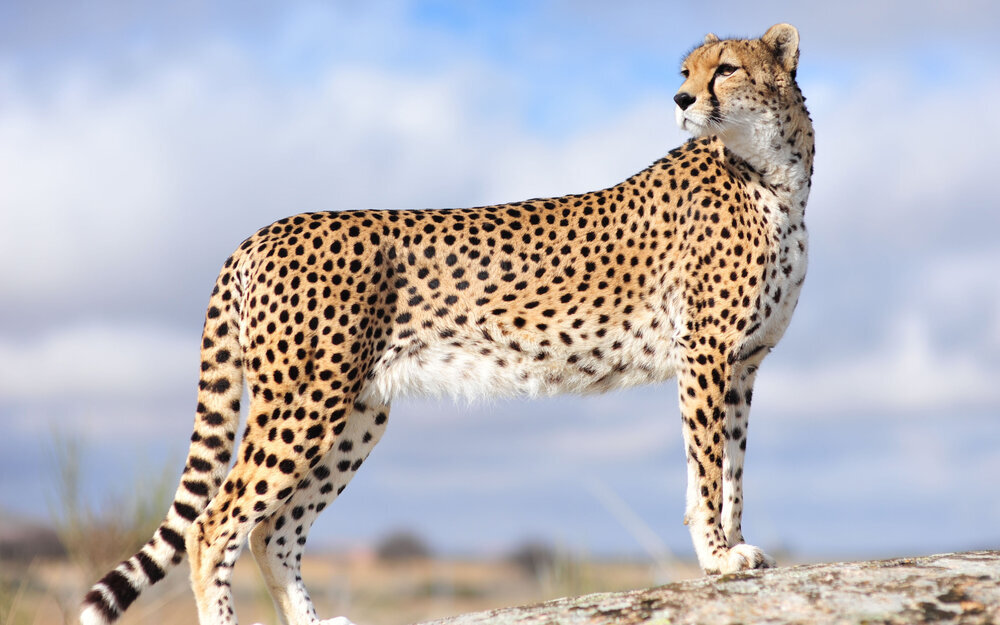Will the world’s fastest Asiatic cheetah outrun extinction?

TEHRAN – Although Iran is the only country which can save the precious species from disappearance, conservation projects fall into a single solution of captive-breeding. Cheetah’s captive-breeding is not necessarily an inefficient plan, nonetheless concerns come up from recent unsuccessful projects. Will the endangered beauty surpass its unknown fate and escape extinction?
Asiatic cheetahs are globally “Critically Endangered” according to the IUCN Red List. Iran is home to the last population of the Asiatic cheetah in the world. With a presumed population of 50 cheetah individuals at best, challenges associated with the current status of the Asiatic cheetah population include incidental killing of cheetahs by people or livestock guarding dogs, habitat fragmentation and loss of biological corridors and prey base depletion.
Twelve years ago, the Iranian Cheetah Society (ICS) proposed August 31st as the “National Cheetah Day” in Iran to encourage conservation of the last remaining population of Asiatic cheetahs. The National Cheetah Day is now endorsed and celebrated by the Department of the Environment, Conservation of the Asiatic Cheetah Project and several Iranian NGOs every year.
The Iranian cheetah population seems to be in trouble; in spite of ongoing conservation efforts, the species’ population has been shrinking during the past years.
Alireza Jourabchian, Conservation of the Asiatic Cheetah Project founder, told Tasnim on Saturday that unfortunately, mismanagement severely affected the Project, which has made significant achievements in protection of Asiatic cheetahs since the Iranian calendar year 1389 (March 2010- March 2011).
During the 1380s (falling on 2001-2011), the Project, environmentalists, and rangers went far to preserve the species; however, in past recent years, the Department of Environment failed to take control over the forces and oblige them to fully employ the protection rules, he explained.
Referring to the claims saying that the DOE prepared a plan on capturing two remaining Asiatic cheetahs alive for conservation and reproduction purposes in central province of Yazd, he noted that it is not reliable that there are only two cheetahs left in Yazd province.
The claim must be provided with evidence and documentation which has not yet been presented, Yazd province has been always the main habitat of Asiatic cheetahs, he lamented, implying that how can we ensure that only two of the shy animal are remaining in the area?
Criticizing the DOE’s plan on live capture and captive breeding of cheetahs, he said that instead of devising a plan to breed the species in their natural habitats, related bodies insist on spending money to implement a plan which is, through an optimistic view is the birth of cubs who must live in captivity for the rest of their lives and have no effect on preventing the species from extinction of in the nature.
Pointing to the artificial insemination failed on cheetah in captivity at Tehran’s Pardisan Park, he highlighted that after spending a considerable amount of budget and sacrificing two valuable cheetahs, a plan of reproduction finally failed.
Asiatic cheetah born in captivity will never learn the skills to survive in nature and will not be able to reproduce in nature, thus a captive breeding plan cannot be considered as a measure to prevent the extinction of the cheetahs, he lamented.
“Cheetahs are not protected by dramatic acts and slogans; real protection happens when we restore their natural habitat, increase the number of rangers and environmental defenders in their habitats, improve protection measures and constantly supervise the protected areas,” he explained.
However, preventing the cheetahs from diminishing is not a top concern for the responsible bodies, who prefer to spend on fencing, removing the cheetahs from nature and breed the species in captivity, he regretted.
“I believe that the cheetah population is not so small; there is not only the knowledge, motivation and tools needed to monitor and estimate the cheetah’s population in the country, adding, no cheetah is observed, should not be taken that cheetah does not exist.”
Cheetahs are shy animals and, if they feel danger immediately migrate to safe and pristine habitats, he said, concluding, “I assume cheetahs will be able to survive as they have managed to preserve for years, provided that we do not destroy their habitat.”
This is while, Hamid Zohrabi, deputy chief of the DOE, told YJC that “We have taken measures to revived the species in past recent years.”
Although, there is not a certain data of the cheetahs’ population in Iran, they are estimated at 20-50 based on the most recent data, he explained.
He went on to note that to conserve the species, security of the natural habitats must be ensured, so some 5,536 livestock have been moved out of cheetah home ranges in Touran National Park in the province of Semnan to avoid livestock-cheetah conflict.
“In an attempt to provide a safe place for the few surviving Asiatic cheetahs, we have constructed an underground passage stretching to 8 kilometers along Abbasabad road in Semnan province, and fenced roads which led to the accidents of cars with cheetahs,” he added.
“Last year, we allocated 400 billion rials (nearly $10 million) to provide the rangers with environmental protection equipment, part of which was allocated to cheetah habitats,” he said.
“We earmarked budgets to reproduce and revive the endangered species. Despite the shortcomings and limitations, we try our best to save the valuable species,” he concluded.
Saving Asiatic cheetahs’ lives, is not only criticizing and blaming the conservation projects, while criticizing is also a way to help Asiatic cheetahs and plans to reach efficient achievements, therefore, different methods must be implemented to finally reach an answer.
Using countries expertise can be another way to survive the species as well as reviving their habitats and preventing their natural habitats to die further.
Conservation cannot be achieved unless all the people and all the organizations take steps toward the issue.
FB/MG
Leave a Comment